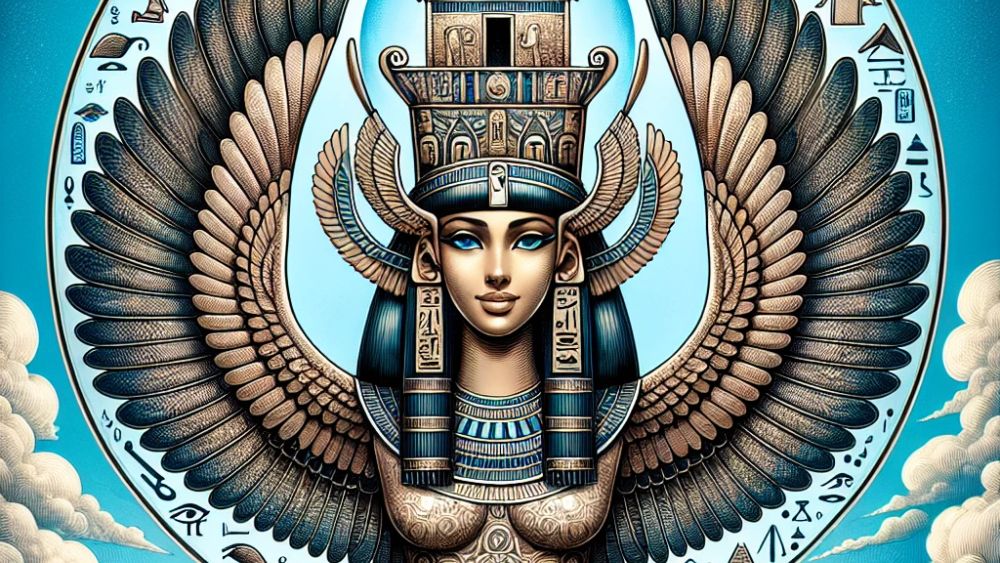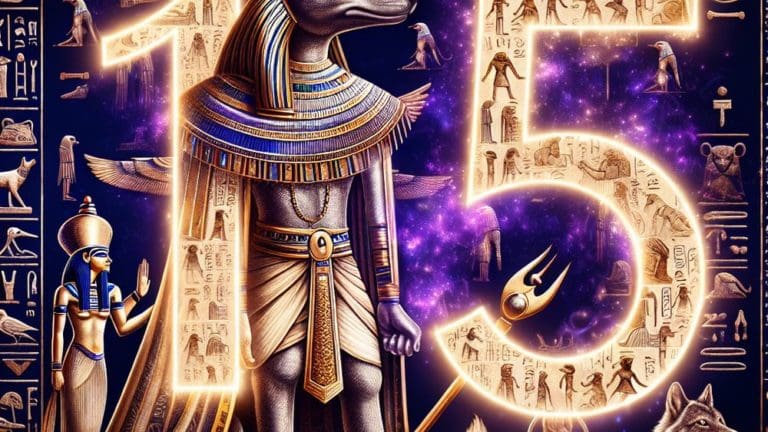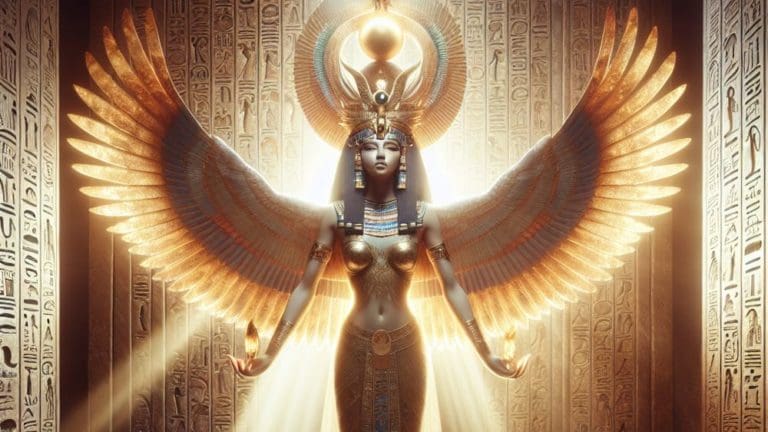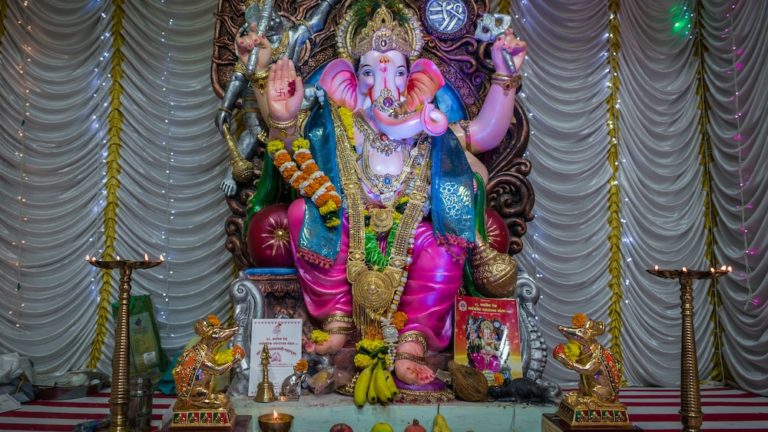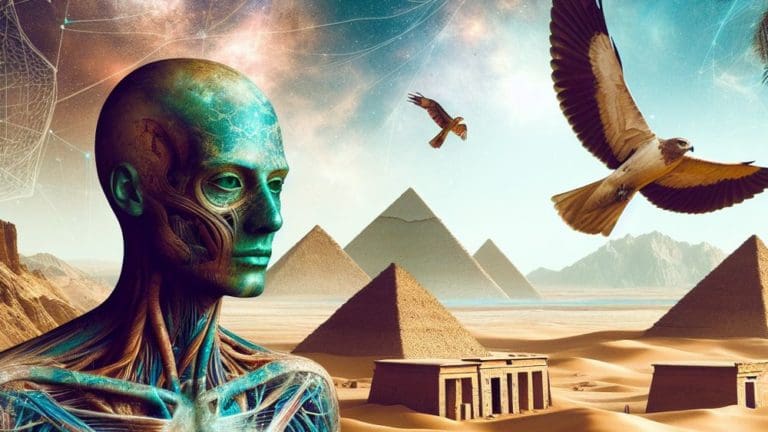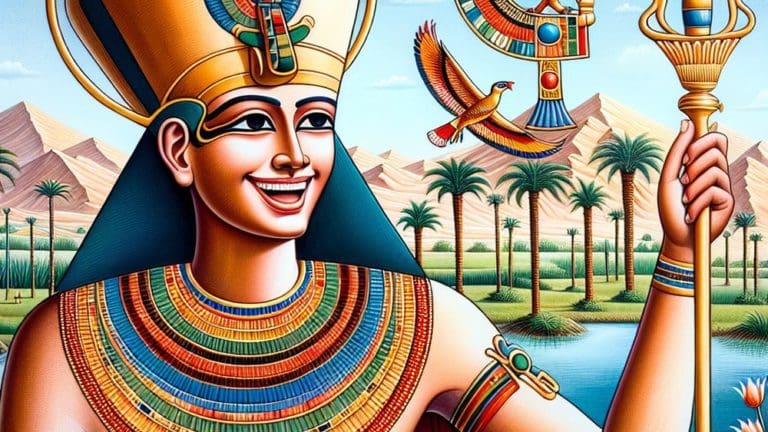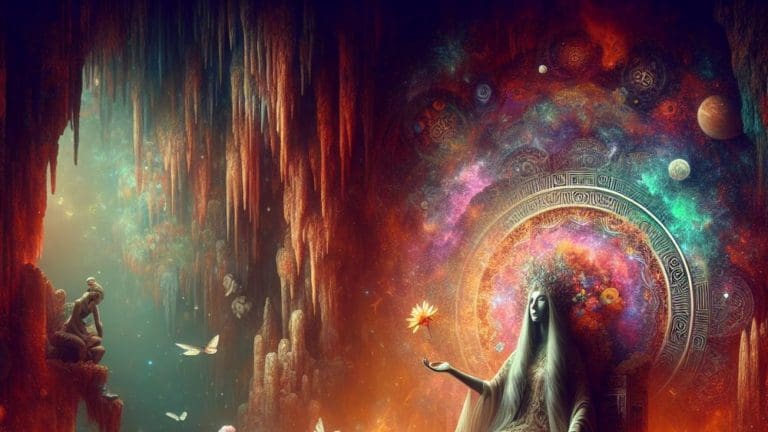Nephthys Egyptian Goddess: Mythology, Facts, And Symbolism
Nephthys Egyptian Goddess: Mythology, Facts, And Symbolism
Have you ever stood before the sweeping sands of time, peering into the twilight realm of ancient Egyptian mythology? If so, the enigmatic Nephthys Egyptian Goddess beckons, unwrapping layers of lore and spirituality that have fascinated historians and the curious alike for millennia. Nephthys, or Nebet-Het in ancient Egyptian, is a figure shrouded in mystery and significance, her stories woven into the fabric of one of the world’s most captivating ancient civilizations.
From her name to her iconography, her relationships to her divine roles, the tapestry of Nephthys’s existence is as compelling as it is profound. This deity invites us on an exploratory journey that leads into the heart of temples, tombs, and ancient texts. Who was this divine protectress, whispering enchantments over the dead, and what secrets does she hold for the afterlife? These questions spar with our imagination, urging us to delve deeper.
Understanding Nephthys isn’t just unearthing the realm of the gods; it’s an adventure into the psyche of a civilization that valued the afterlife as much as the living one. Let’s embark on this journey together, piecing together the fragments of history, unraveling complex narratives, and immersing ourselves in the symbolism that Nephthys, the protector of the pharaoh’s soul, embodies.
The Identity and Significance of Nephthys
Nephthys Egyptian Goddess captures a unique and vital essence within the pantheon of Egyptian deities. A goddess often represented by the hieroglyph of a house or a basket, her very identity is imbued with notions of sanctuary and domesticity. She embodies the shadows to her sister Isis’s light, a guardian of the dead and a silent supporter of the kings and their eternal rest. Her essence and influence stretch beyond the realm of the living, casting a protective veil over souls navigating the treacherous paths of the afterlife.
Name, Etymology, and Iconography
Nephthys, a goddess whose name is a call to the threshold of the temple, invites us into a space of worship and wonder. Etymologically, her name derives from the ancient Egyptian words “neb” (lady) and “hut” (house), encapsulating her role as the lady of the house or temple. Her iconography is steeped in symbolism:
- House and basket: Symbols of the domestic sphere and protection she offers.
- Hawk or kite: Her form in the myths, soaring between life and death.
Such symbols make her a tangible witness to the lives of those she guards, offering solace to them through her protective embrace. They are the veils through which one glimpses the underworld, and through which Nephthys reveals her divine countenance.
Nephthys, the goddess of the house and temple, offers protection and solace to those she guards through her symbolic iconography.
The Role and Characteristics of Nephthys in Egyptian Mythology
In the mythos of ancient Egypt, Nephthys was not simply a domestic caretaker but a goddess of the night, crafting her powers in the realm of shadows and secrets. As the companion and counterpart to Isis, she presents a duality – mourning yet nurturing, peripheral yet integral. Her lineage as a daughter of Nut and Geb fortifies her stature, and her marriage to Set renders her narrative complex, as she aligns herself with her sister against her own husband.
- Protector and Mourner: A primary role in rituals related to death and the afterlife.
- Healer and Magician: Skilled in the use of magic and medicinal lore.
As we explore the tapestry of Nephthys’s roles and characteristics, it becomes clear that her presence dances on the cusp of historical and spiritual realms, beckoning the curious to learn more about her enigmatic nature.

Nephthys in Egyptian Mythology and Religious Practices
In the core of religious texts and rituals, the presence of the Nephthys Egyptian Goddess was profound and pivotal. Worshipers and priests invoked her name in spells, her very essence weaving a protective thread through the intricate tapestry of Egyptian religious practices. In temples dedicated to her honor, her stories were etched into the walls, and her divine assistance was sought to guard the vulnerable souls both in life and in death.
The Osiris Myth and Nephthys’s Involvement
In the epic of Osiris, Nephthys’s role is pivotal and laced with intricate family dynamics. She stands as a foreseeing sister and later, a dedicated mourner of the slain Osiris, helping Isis to resurrect him. An act that masterfully entwines betrayal, loyalty, and redemption into the narrative of her divine existence. Underneath her keen gaze, lies are unearthed and truths revealed:
- Deception: Nephthys’s subterfuge in the guise of Isis to conceive her son Anubis.
- Sorrow and Restoration: Her lamentation for Osiris and assistance in his rebirth.
This saga not only deepens her character but also her role amidst Egyptian cosmology – revealing a goddess who navigates with deftness the realms of life, death, and the dark waters of the underworld.
The Dynamic Duo: Nephthys and Isis in Myth and Worship
Have you ever wondered about the powerful partnerships of ancient deities? Among the most enthralling and inspiring duos in Egyptian mythology is that of Nephthys and Isis. These sisters, intertwined by fate and loyalty, stand as pillars of support and cooperation in ancient tales. Nephthys, often in the shadow of her more prominent sister, played a vital role in ritual and narrative, complementing Isis’s actions with her own significant contributions.
In the pantheon of Egyptian gods, their relationship was akin to the sun and moon, each brilliantly shining in their own time and way. When Osiris was dismembered, it was together that Nephthys and Isis set out on a quest of mourning and magic, seeking to restore their brother and ensure the continuation of life and order. Their united front was celebrated in worship, where devotees would call upon both goddesses for their complementary powers: Isis for her healing and protective abilities, and Nephthys for her role as a guardian of the dead.
Their pairing was so significant that they were often depicted as two kites, birds known for their protective and watchful nature, overseeing mummification rituals and funerary rites. Nephthys and Isis represented the ultimate sisterly bond, a union that surpassed the realms of life and death, bringing comfort to those journeying into the afterlife. The prominence of this dynamic goddess pair was such that their combined force permeated ancient Egyptian culture, leaving an indelible mark on its spirituality and artistic expression.
The Protective Goddess: Nephthys and the Afterlife
When we peer into the hallowed crypts of ancient Egypt, we see the vigilant gaze of Nephthys, the protective goddess, standing guard. As much as she was a deity of lamentation, Nephthys was also a beacon of security in the afterlife, guiding souls through the treacherous paths of the underworld. It was believed that her presence ensured the safety of the deceased, providing a comforting embrace as spirits navigated the trials leading to the Field of Reeds.
Nephthys Egyptian goddess was intrinsically connected to the process of mummification, a testament to her role in preserving life beyond death. She was thought to be a watchful defender, her wings spread wide as an emblem of eternal vigilance over the mummies of pharaohs and commoners alike. The presence of Nephthys was beseeched through incantations and rituals, with priests invoking her name to ward off evil and guarantee a transition bathed in divine protection.
This somber yet reassuring role as the usher into the hereafter added another layer to the complex character of Nephthys. Her persona encompassed both the grief of loss and the hope of eternal preservation. In temples and tombs, her image served as a constant reminder that life, though fleeting, was but a prelude to a profound and spiritual passage, watched over by her unwavering commitment to the souls of the departed.
Nephthys, the Egyptian goddess, played a dual role as a protector in the afterlife and a defender of mummies, ensuring their safe transition and eternal preservation.
Nephthys’s Family and Relationships
Delving into the family and relationships of Nephthys Egyptian goddess unveils a tapestry woven with intrigue and celestial drama. As a daughter of the earth and sky, her lineage is as ancient and noble as the bedrock of Egypt itself. Unraveling her divine connections provides insight into the rich storytelling and complex dynamics that characterized the pantheon of Egyptian deities.
Divine Lineage: Parents and Siblings
In the grandiose halls of Egyptian lore, Nephthys’s divine lineage can leave us awe-struck. Born from the union of Geb, the god of earth, and Nut, the goddess of the sky, her celestial family was both powerful and revered. Nephthys was one of four siblings, each holding their own esteemed place in Egyptian mythology.
- Her brother Osiris, a deity of resurrection and the afterlife, ruled as pharaoh over the living world prior to his death.
- Seth, another brother, embodied chaos and was famous for his rivalry with Horus and the murder of Osiris.
- Her sister Isis, perhaps the most renowned among them, was a goddess of magic and healing whose love for Osiris spawned legends and rituals that reinforced the cyclical nature of life and death.
This divine quartet represents the core of an epic saga, underlining the themes of relationship and rivalry, power, and the eternal struggle between order and disorder.
Complex Relationships: Consorts and Offspring
Amidst the deities of ancient Egypt, relationships often took on convoluted forms, with alliances and enmities crafting the narratives we know so well. For Nephthys, her choice of consort was as enigmatic as her presence in the myths. She was primarily known to be paired with Seth, the god of storms and disorder, a coupling that was both contentious and complementary.
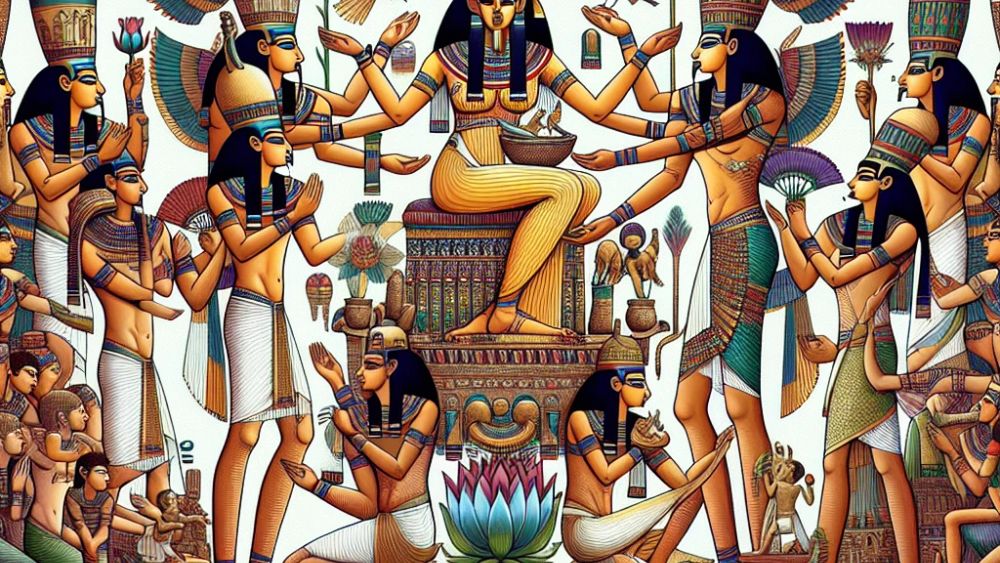
- Despite their marriage, Seth’s aggression and Nephthys’s gentleness seemed an improbable match.
But the story does not end there. Out of her longing for a child and coupled with an intrigue worthy of divine soap opera, Nephthys disguised herself as Isis to seduce Osiris, resulting in the birth of Anubis, the jackal-headed god of mummification. This act inserted Nephthys at the heart of Egyptian mythology’s most potent drama: the death and resurrection of Osiris.
- Her love for Osiris and her maternal instincts for Anubis painted a picture of a goddess who struggled between her loyalties and desires, leading to narratives rich with emotional depth and symbolic resonance.
FAQs
1. What are the most common symbols associated with Nephthys?
The most common symbols associated with Nephthys include the house and basket hieroglyphs, representing her name, and the kite, a bird which she was often depicted as in funerary art, symbolizing her role as a protective goddess of the dead. Her symbols reflect her protective nature and her connection to the structures of both the domestic sphere and the afterlife.
2. How did Nephthys contribute to the story of Osiris and the afterlife?
Nephthys contributed to the story of Osiris and the afterlife by serving as a mourner and a protector. She and her sister, Isis, were instrumental in resurrecting Osiris, using their magic to restore him to life temporarily, facilitating his ascent to rule over the afterlife. It’s through her vital involvement that Nephthys secured her place as a key figure in the myths related to death and the hereafter.
3. Can you explain the relationship between Nephthys and her sister Isis?
The relationship between Nephthys and her sister Isis is complex and multifaceted, marked by deep sisterly bonds as well as intricate mythological narratives. Although Nephthys was married to Set, the antagonist in Egyptian mythology, she was closely aligned with Isis, especially in the quest to revive their brother Osiris. Their unity was a powerful force in mythology, symbolizing the strength of kinship and collaboration.
4. What role does Nephthys play in modern interpretations of Egyptian mythology?
In modern interpretations of Egyptian mythology, Nephthys is often viewed as a goddess who embodies various aspects of life and death. She’s perceived as a symbol of loyalty, due to her support of Isis, and a guardian in funerary practices, offering safe passage to the afterlife. Her characteristics resonate in modern storytelling, adding depth to the understanding of ancient Egyptian beliefs about family dynamics, protection, and the afterlife.
Conclusion
As we’ve delved into the enigmatic world of Nephthys, the Egyptian goddess, we’ve uncovered her multifaceted roles and the profound significance she has held across millennia. From her symbolic representations to her enduring presence in the core tales of Egyptian mythology, Nephthys exemplifies the intricate tapestries of ancient beliefs. Her narrative is a testament to the abiding resolve found in familial bonds and the devotion to eternal stewardship of souls transitioning into the afterlife.
In contemporary times, the figure of Nephthys Egyptian goddess continues to captivate and intrigue us, inviting further contemplation and research. Her legacy in Egyptology and the threads that extend into popular culture remind us of the timeless nature of myth and its capacity to reflect the essence of the human spirit. As we bid farewell to the shadows of history and re-emerge into the light of the present, I, Cedric, urge you to carry with you the curiosity and respect for the ancient world we’ve explored together. Let us continue to seek, unearth, and cherish the stories that connect us to our past and to the enduring legacy of Nephthys, the sister, mourner, and guardian of Ancient Egypt.

